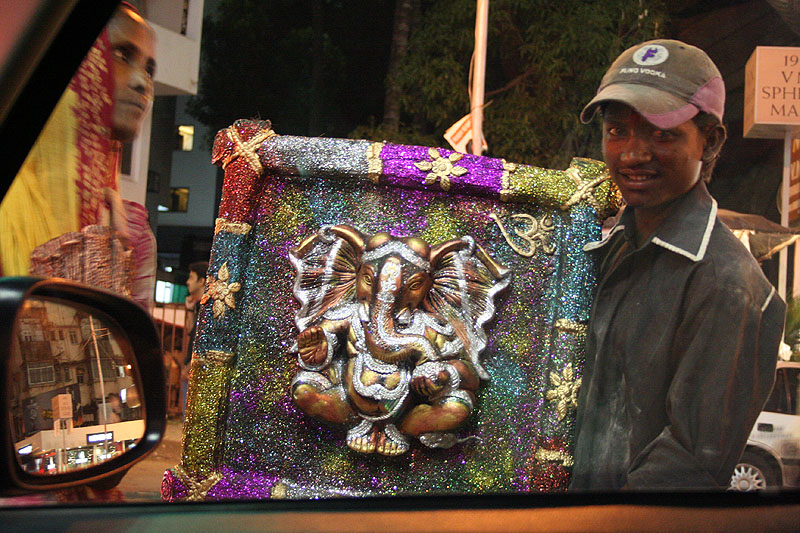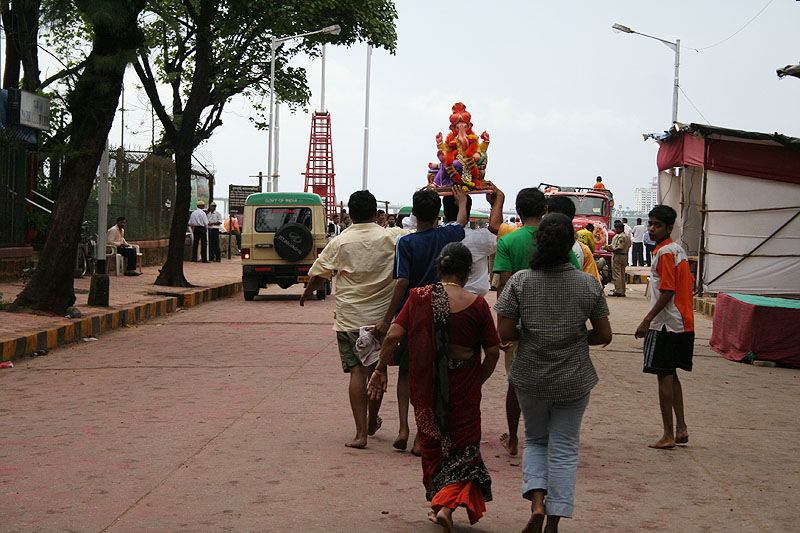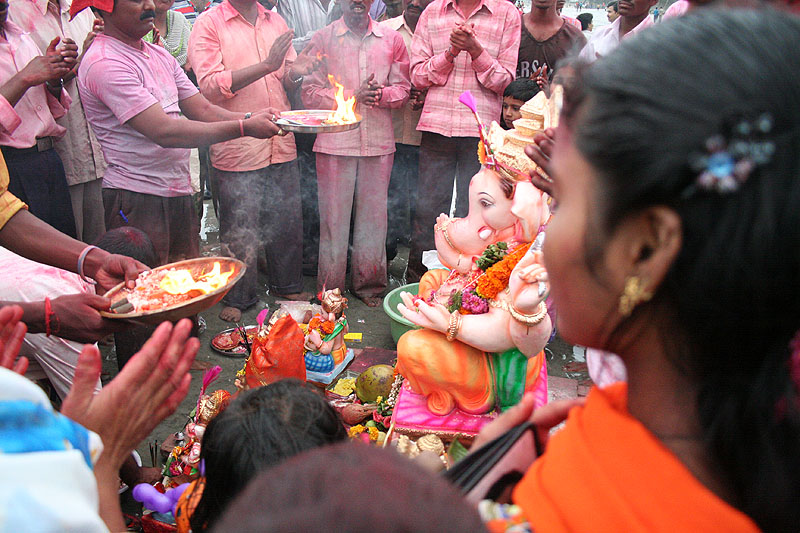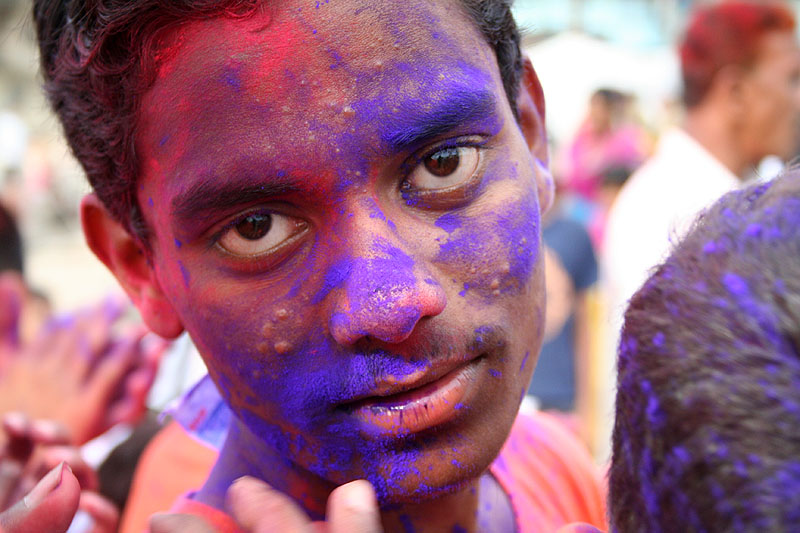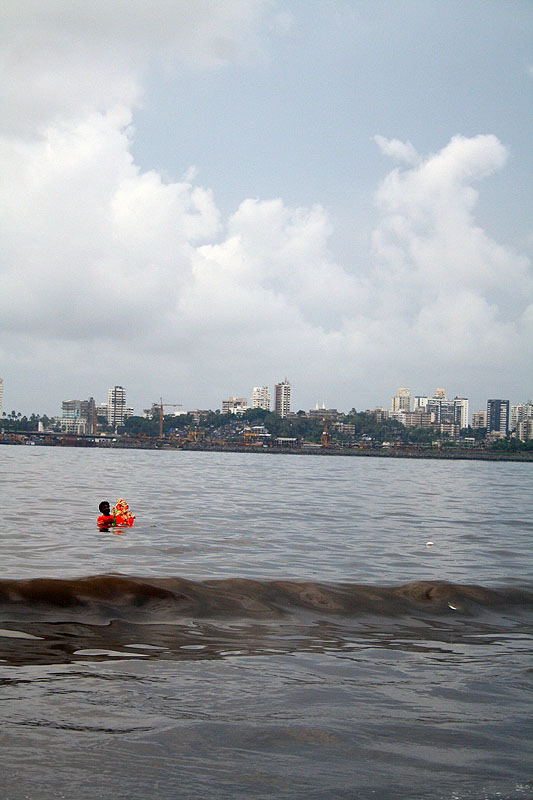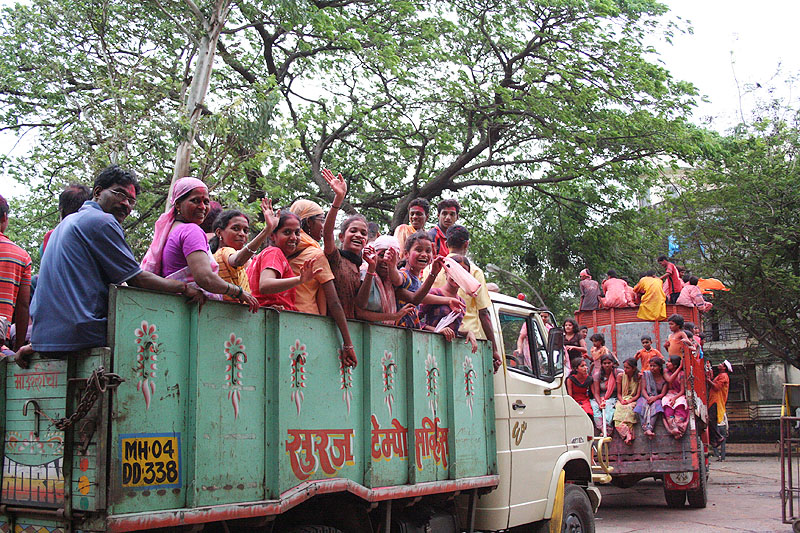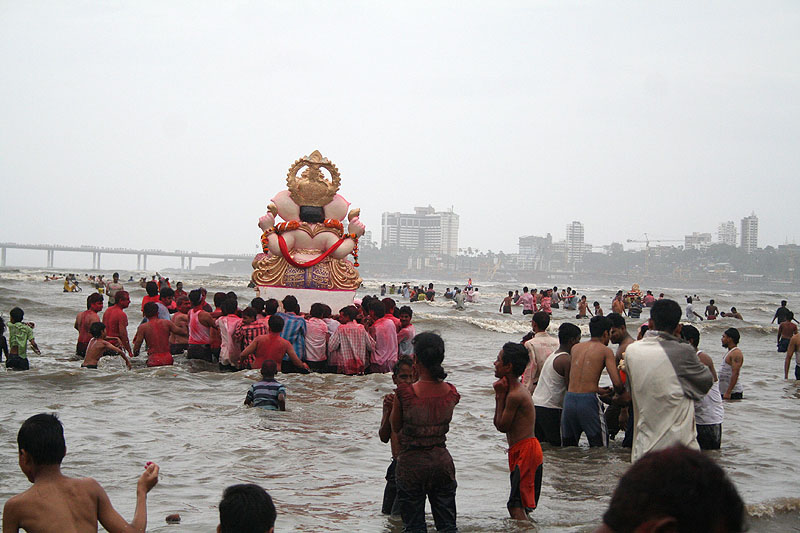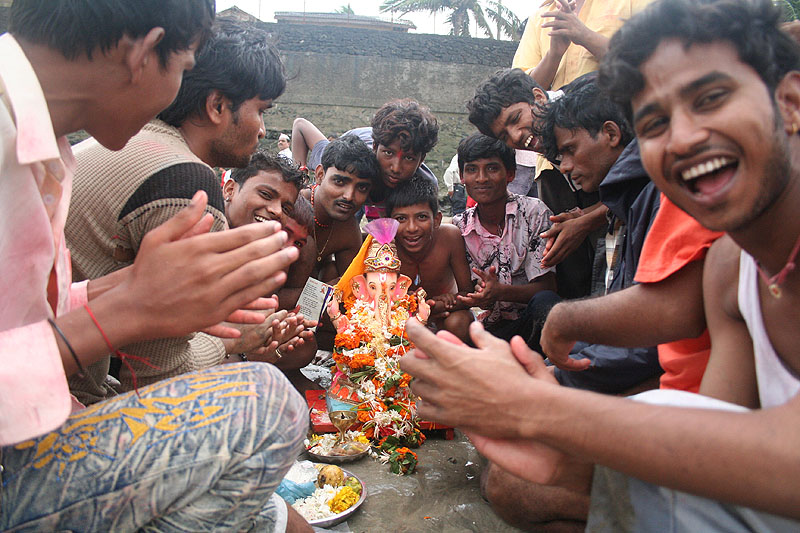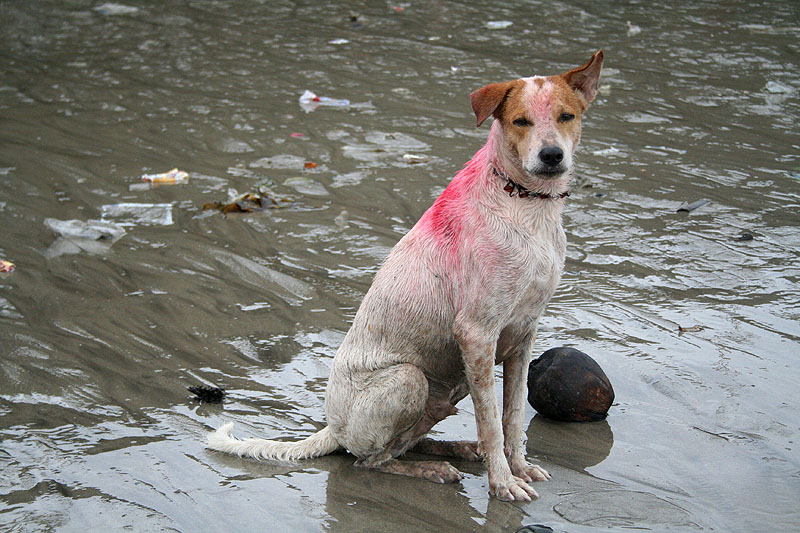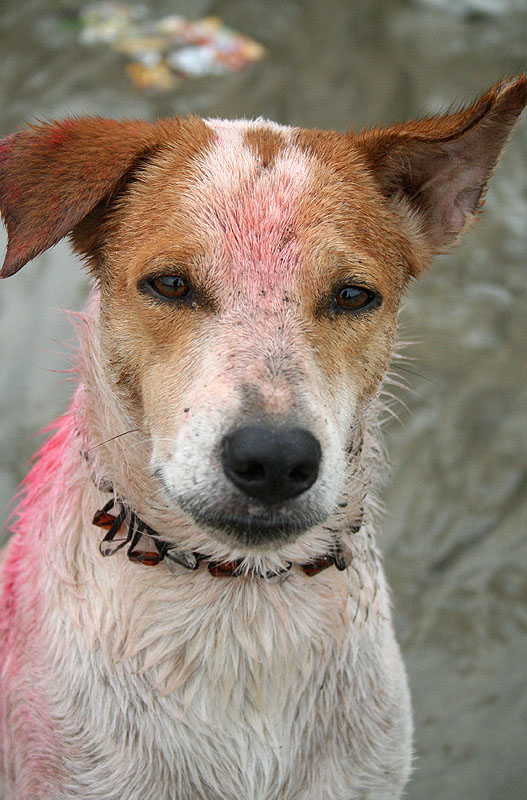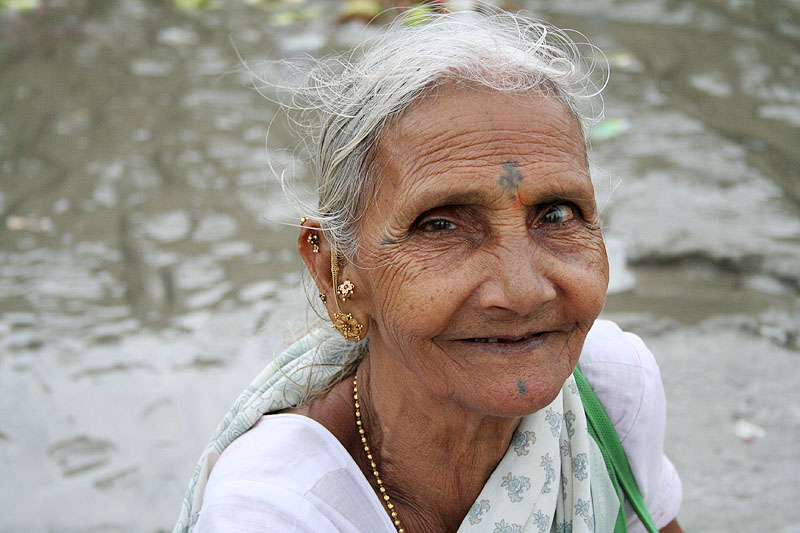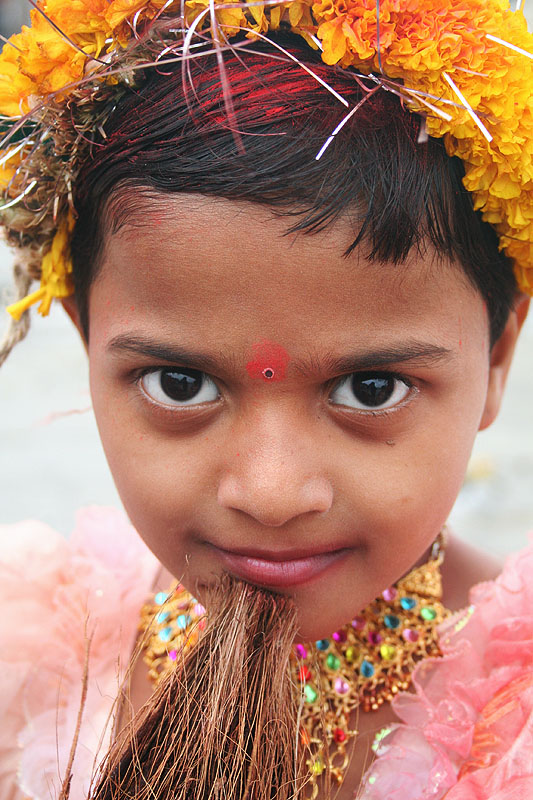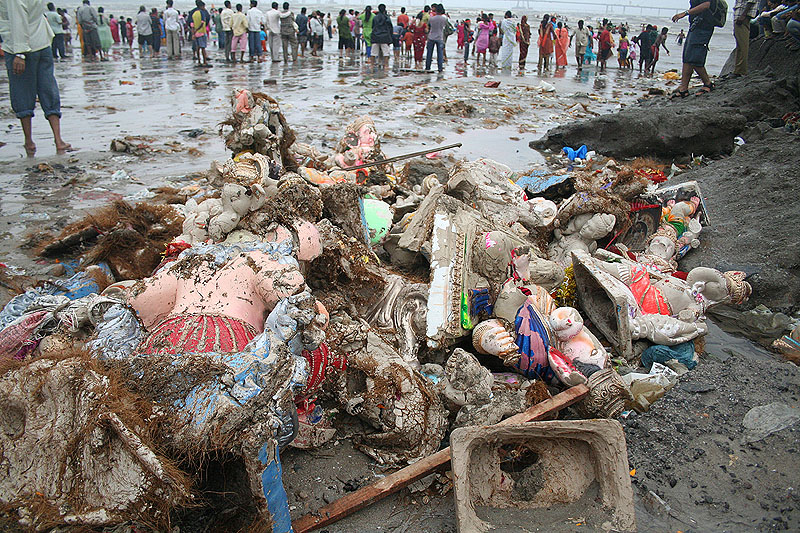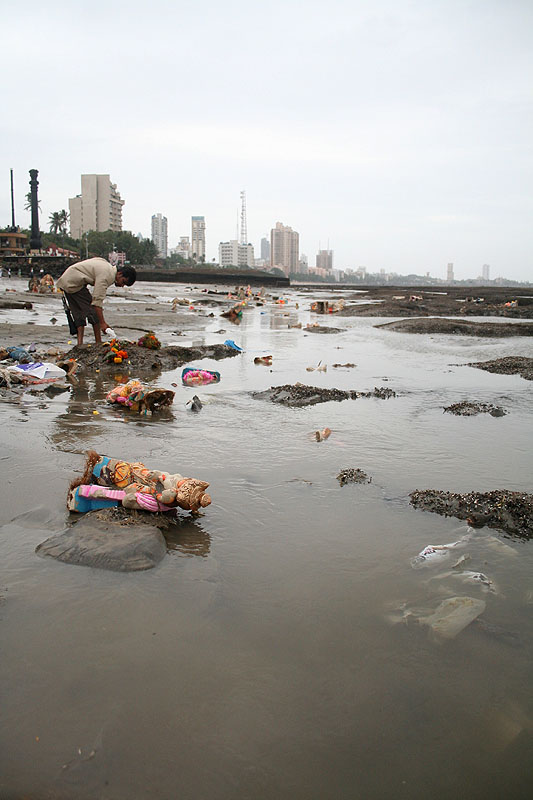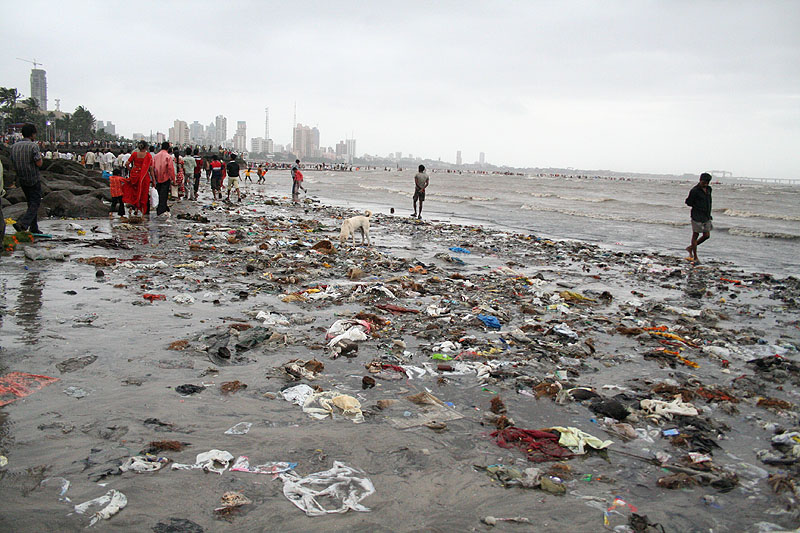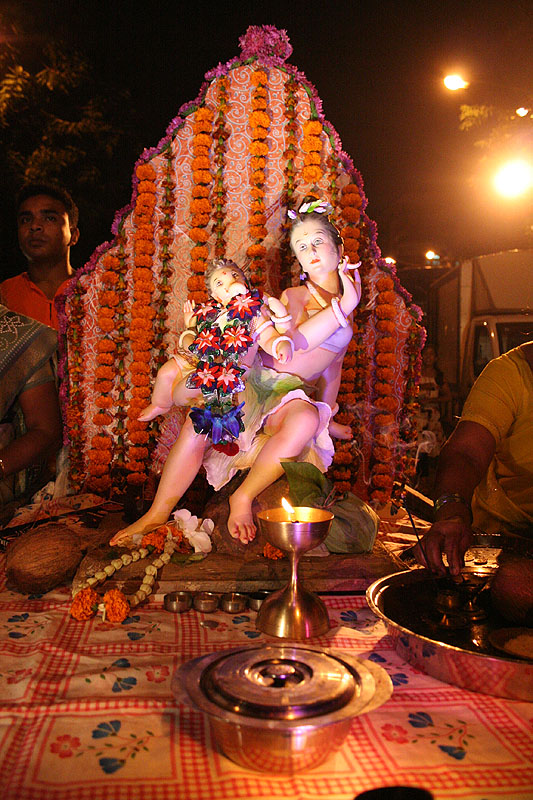The Immersion of Ganesh
Ganesh Chaturthi Festival – Mumbai, India
September 2008
I’m back from yet another trip to India  Last year I travelled around the North, but this time I was just in Mumbai, arguably the most buzzing and vibrant city in India.
Last year I travelled around the North, but this time I was just in Mumbai, arguably the most buzzing and vibrant city in India.
My time here coincided with Ganesh Chaturthi, a large 10 day festival celebrating Ganesh (also known as Ganpati), one of the most, if not the most significant Hindu god.
A few months prior to this festival, clay/plaster models of Ganesh, ranging from a few centimetres to a few metres high, are produced and bought by households. They are then elaborately decorated and worshipped with friends and family for the 10 days, after which they are immersed in the sea on the 11th day.
It probably all sounds very bizarre to a non-Hindu or someone unaccustomed to the role religion plays in India, but this is apparently a very normal, albeit a hugely important annual event in the lives of Hindus in India, Nepal and Sri Lanka. It mostly takes place in coastal areas which explains why it’s such a popular and traditional festival in Mumbai. I’ve been in India during Diwali (Hindu New Year) and Navratri (a dance festival), but I don’t think any of those compare to this celebration. It’s impossible not to be involved in some way. Even road messages relate to Ganesh. One to full view:
Street sellers try to flog Ganesh ornaments to people in their vehicles on the streets. This guy was ready to sell his piece for as little as 100 rupees (£1.20/$2):
Larger statues are kept on public display for people to worship and offer gifts to. These can be found on roadsides and aren’t hard to miss!
Leading up to the 11th day of the immersion (also known as Visarjan), celebrations take place on the streets, with people dancing and singing, mostly at night. It appears to be completely spontaneous and worshippers literally dance in the road, oblivious to the traffic, which isn’t the most tame in Mumbai! I was about to go to bed when I heard loud dhol drums outside. I took my compact digital and recorded the following. Sorry about the rubbish quality. I’ll brighten it up when I figure out how!
They were so enthusiastic :D
Light fills virtually every street in Mumbai during holy occasions.
Another night I stumbled across a street full of dancers. Traffic had come to a virtual standstill but no one seemed to complain. In fact, cars, motorbikes and trucks simply tried to swerve around them while they continued to celebrate.
A roll of fireworks was then laid out and lit, right in the middle of the road.
I’d seen fireworks let off in this way during Diwali once in India, but not with this amount. Completely crazy!
Even standing far away I felt sparks on my arm, and there were children nearby completely unaccompanied. It’s so odd yet so normal here. No one bats an eyelash – I must have been the only one anxious about the sparks!
Although the 11th day is the main day for taking the statues to the sea, there are a couple of days during the festival where people can carry out immersions. I was at the coast for one of these ‘minor’ immersion days.
First the statue is carried to the beach, often with dancing and singing.
On the shore rituals and prayers are carried out.
There’s often chanting during these rituals like in this video I took:
Coloured dye is thrown around. A baby threw some in my eye – not nice!
Then the statue is taken into the sea as far out as possible, and immersed.
People love posing here, which is great for pics!
On the 11th and last day known as the Visarjan, I went along to the coast again in the afternoon. People were arriving with their idols.
I was told this was the most enjoyable time as beaches wouldn’t be too crowded. By 11pm the entire place was chock-a-block. There was literally nowhere to move and due to the stormy weather, unless you had a statue to immerse, you were kept back, out of the sea.
I have to point out, that as these pictures show, Mumbai weather was a very gloomy affair. Although highly humid at times, and temperatures in the late 20s, the overall weather was pretty dull. The monsoon season isn’t over yet, so it rained almost every day, and I’m not talking about light drizzle. This is torrential rain that can last for hours, easily causing flooding. Luckily it didn’t rain while I was out in the afternoon, but at night when I went back, I got absolutely drenched, and it’s impossible to take pictures. There’s currently no filter on the front of my lens (long story involving public toilets and crooked lens threads), so I didn’t really want to risk taking pictures in the monsoons! of course, this is a country where a ‘bit’ of rain isn’t going to affect celebrations or dampen spirits.
The real downside to this joyous festival is the pollution.
Really and truly, it’s atrocious. The state of the beach was just shocking, and often non-biodegradable idols are immersed, and plastic bags left strewn all along the coastline.
When you have thousands of these in the sea, you can only wonder what damage it’s doing to the environment. These statues were washed back from the sea and collected later to be disposed of, but those carried away with the tide are simply left to rot in the water.
It’s no wonder the water pollution in Mumbai is so terrible. In fact, I saw a news report about water pollution levels across India. In Delhi, 40% of the water contains harmful bacteria, and in Mumbai it’s 100%. This is why drinking the water straight from the tap is a definite no-no for foreigners.
Anyway, I went back at night but it was too crowded, rainy and dark to get any clear pictures, so instead I’ll end with a shot of my personal favourite statue:
I can’t think of any other country that celebrates festivals the way they do in India.

Some other videos I took:


